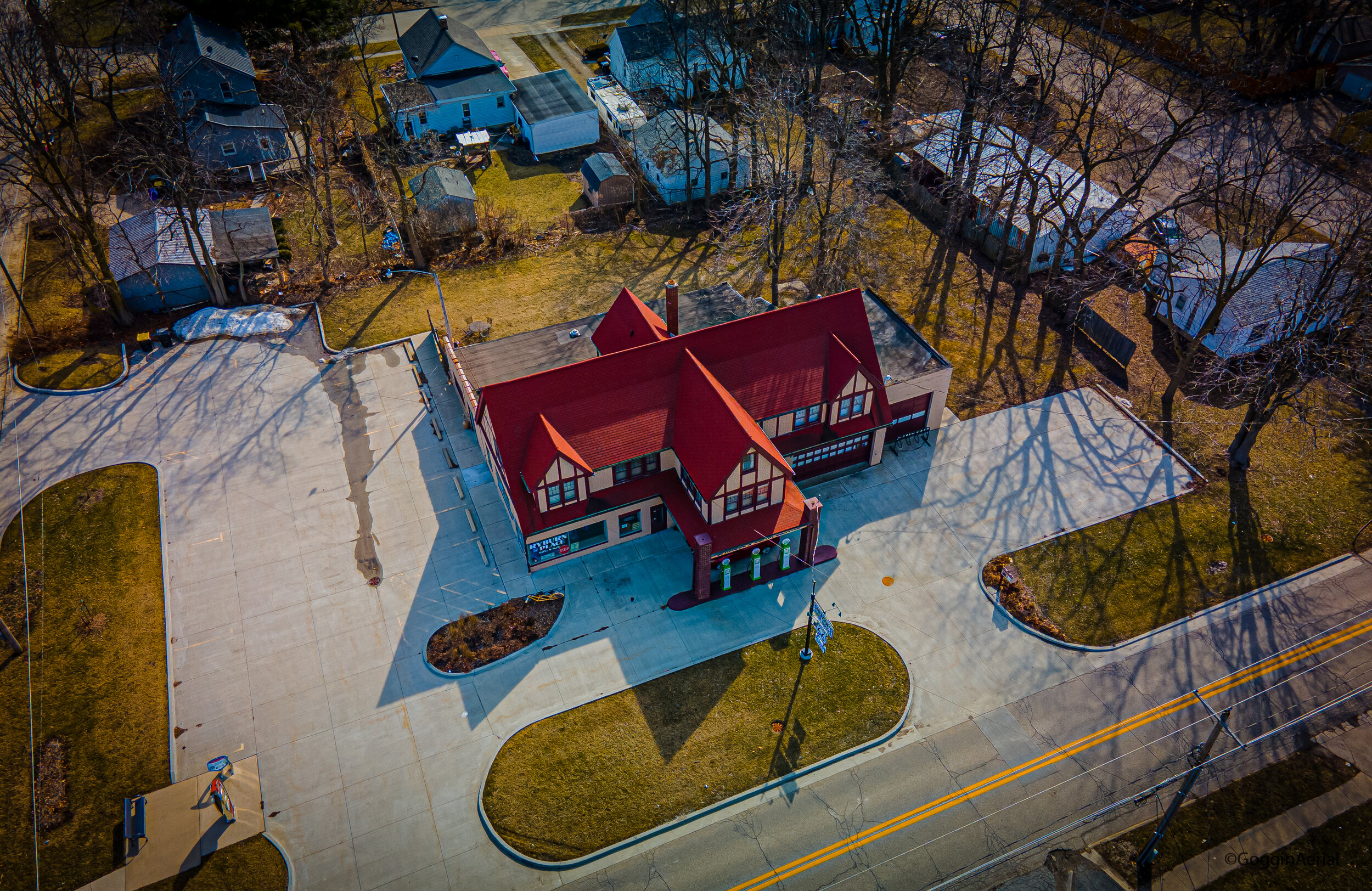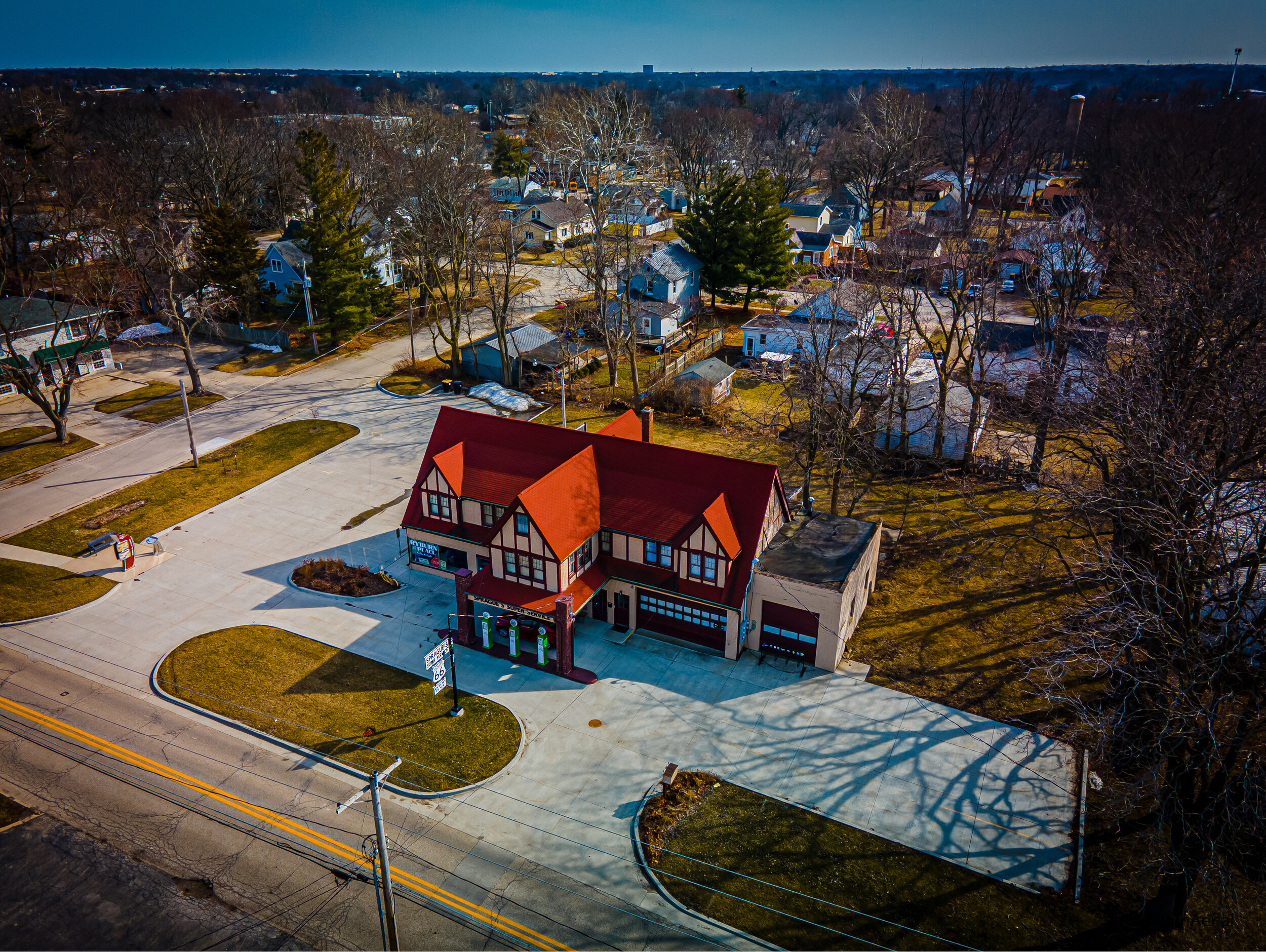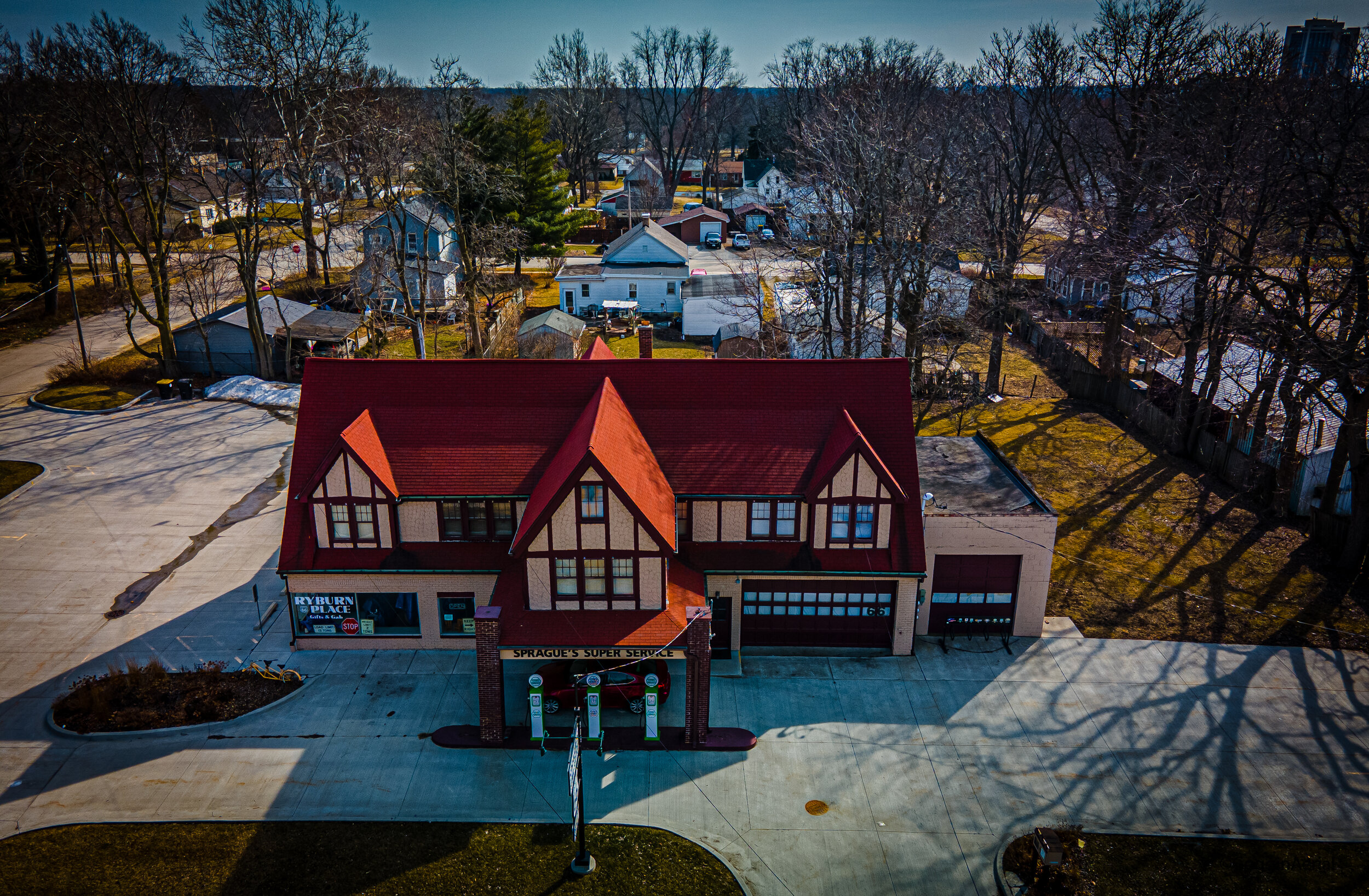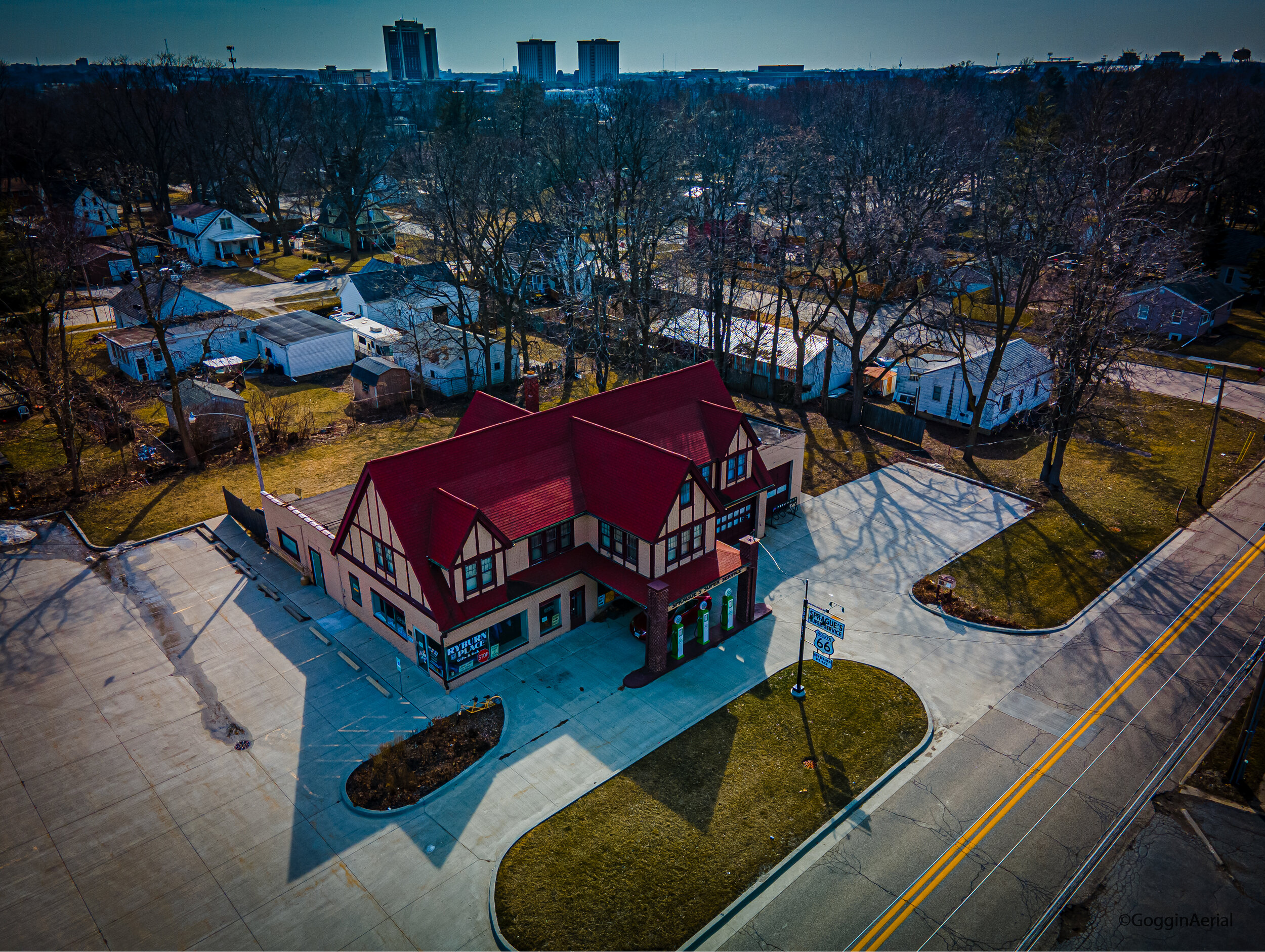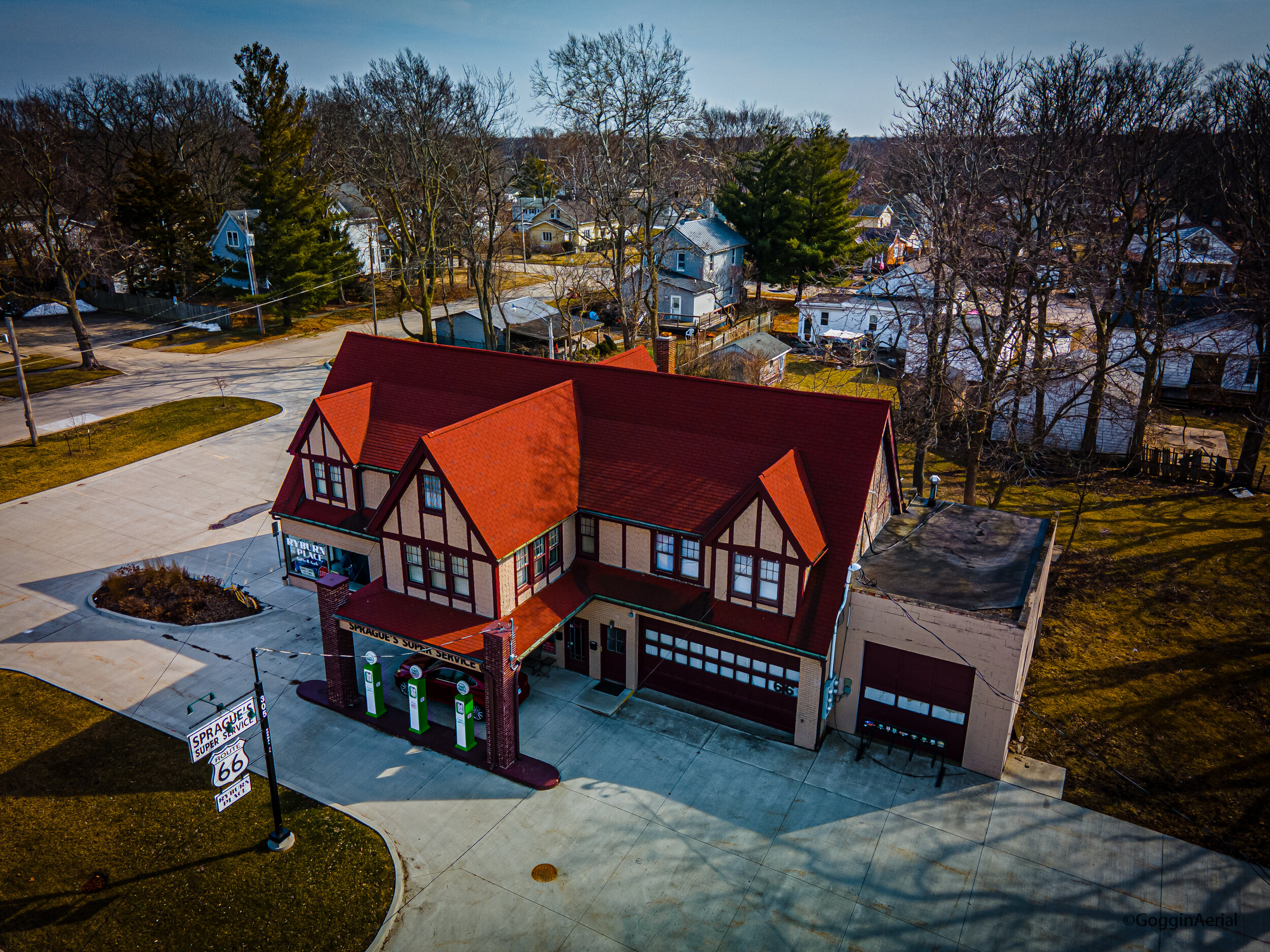Sprague Super Service
This one was fun to shoot! Skies were gorgeous that day, just a little windier for my drone than I like, but not dangerously so. The station is situated on calm stretch of road not too far from downtown. It’s also far enough from BMI (the airport here in town) that altitude is not as much of an issue as it is at other nearby NRHP sites. Downtown’s high-rises can be seen standing in the near distance, and I got a sense of how this might have seemed a significant approach to a bustling metropolis half a century ago. Bloomington-Normal was a major economic draw for Farmers all over central IL, both as the county seat and fairgrounds location, but also as a major rail stop for livestock and grain transport. Bloomington-Normal was also a welcome pit stop for travelers along the “Bloody ‘66”, and that’s where this little station comes in. From the National Parks Service:
“The first gas stations along Route 66 were simple curbside pumps outside general stores. By the late 1920s, the Mother Road supported stand-alone gas stations--usually two pumps beneath a canopy with a simple office attached. Over time, gas station buildings became more substantial. Sprague’s Super Service in Normal, Illinois, may well represent the apex of this trend.
By 1931, when William Sprague built his station, most of the nation’s gas stations were affiliated with major oil companies such as Pure Oil, Phillip’s Petroleum, or Texaco. Architects for these companies provided functional, standardized station designs. Drivers could glance at a white building with three green stripes, for example, and know at once that because of the recognizable icon it was a Texaco station.
Like other small entrepreneurs of the time, Sprague took a different approach. A building contractor, he constructed his large, unique, brick, Tudor Revival gas station using high-quality materials and craftsmanship. The result, Sprague’s Super Service, appeared to be part manor house and part gas station, and sold City Service gas. Steep gables distinguished the broad, red roofline. Substantial brick peers supported the canopy. Stucco with decorative swirls and contrasting half timbering distinguished the second story….
…Visitors can easily imagine the 1930s, when Chevrolets, Buicks, and Plymouths pulled up under the canopy, and the station attendant pumped their tanks full of gasoline at 10 cents a gallon. After buying gas, travelers could step inside and eat at Sprague’s restaurant or pull into the bay and have their cars repaired. These enterprises occupied the ground floor of the building. Upstairs, a spacious apartment, complete with a sun room over the gas pump canopy, housed Sprague and his family. A second upstairs apartment housed the station attendant…
…The only Tudor Revival canopy gas station in the State of Illinois, Sprague’s is a testament to sound construction and local ingenuity.”
